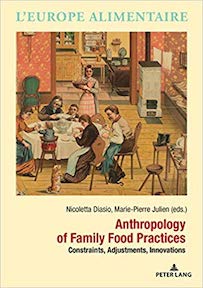Anne DUPUY, Amandine ROCHEDY, Charlotte SARRAT
« Feeding Young Children with Home-made Food: Routines, Necessary Disruptions and Production of Domestic Rituals »
Eating and feeding are fundamentally social activities. This becomes manifest in the way social relations blend together when it comes to food, through a porosity which constitutes an invitation to include, in our observations of children’s experiences in a variety of socializing environments, “what children do with what they receive, and how they respond to it” (Sirota, 2006). The influence of the family, and particularly of the parents, remains essential because children are not biologically, relationally or materially autonomous in the first years of their lives. Then there are the family meals, the time spent at the table, and the affective and emotional charges associated with the vital activity of feeding a child. The division of household and parenting tasks with regard to feeding children is a result of the three-fold job of “acquisition-transformation, relation and love” (Vandelac et al. 1985). The fact of feeding one’s child requires a chain of operations aimed at acquiring and transforming food. These include going somewhere to find and buy food, stocking up, shelving and storing, transforming and preparing, heating and serving food, setting the table, clearing the table, cleaning up after the meal, storing leftovers and finally, ensuring the necessary organization and anticipation for all this work to happen. These activities happen successively through routines that completely obscure, in the manner of […]
Book’s Abstract:
What are the factors that govern our food choices at the beginning of the 21st century? Obvious answers to this question would point to social and cultural habits, but the issue is far more complex than this. Changes in national and international economies, the end of political regimes, migration, but also micro-events such as retirement, the birth of a child, varying school times and seasons, or innovations in industrial design, these are all potential factors that may generate a transformation of family eating habits. The meso- and micro-social levels are deeply intertwined in everyday life, and this book focuses on the connections between the two levels and on how they merge and overlap in the creation of new eating habits. In this book the reader will find scholars who analyse how families and households experiment, circumvent and appropriate technical, political, and social modifications in their family food situations, and how they create freedom and innovation under constraint. Grounded in strong ethnographic field research in several countries (Belgium, France, Italy, Norway, Romania, South-Africa), this book is also a contribution to the use of qualitative methods within the domestic space. It will be a welcome source of information for researchers and students in the fields of anthropology and sociology, for industrial designers and for any reader interested in studying social changes from the perspective of food practices.
Editions: Peter Lang
Collections: L’Europe alimentaire/European Food Issues
Published: 2019, Price: 42 euros, 342 p.
ISBN: 978-2-8076-0236-6
DOI: https://doi.org/10.3726/b14993







